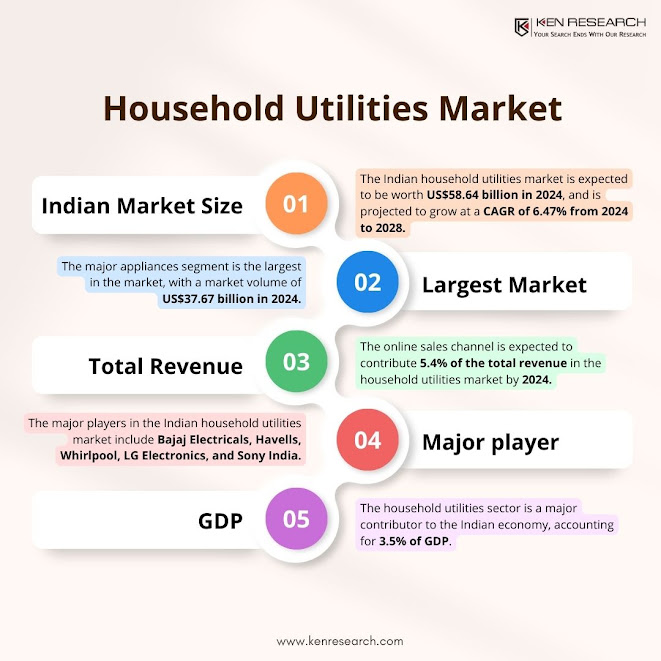Powering Our Homes: Navigating the Booming Household Utilities Market
Imagine the collective hum of refrigerators, the comforting gurgle of running water, and the warm glow of electric lights. These essential services, provided by the household utilities market, are the quiet heroes of our daily lives. But beneath the surface, this market is undergoing a dynamic transformation, driven by innovation, sustainability, and ever-evolving consumer needs. Let's delve into the exciting world of household utilities and explore its present, future, and everything in between.
Market Size & Growth: A Powerhouse Industry
First, let's talk numbers.
The global household utilities market is a behemoth, valued at a staggering $2.2 trillion in 2022. But here's the exciting part: it's projected to surge further, reaching $2.9 trillion by 2027, representing a robust 5.5% annual growth rate. This upswing is fueled by several factors, including:
Rising urbanization: As more people shift to cities, demand for efficient and reliable utilities infrastructure increases.
Growing disposable incomes: Increased purchasing power leads to higher demand for advanced appliances and smart home solutions.
Sustainability awareness: Consumers are increasingly opting for eco-friendly options, driving innovations in water and energy efficiency.
If you want to explore more, read my latest blog in the same topic, Helping You Navigate the Household Utilities Market
Segmentation Snapshot: Unveiling the Landscape
The household utilities market isn't monolithic. It's segmented into three key categories, each with its own dynamics:
Energy Utilities (Electricity, Gas, Water): This dominant segment, valued at roughly $4.3 trillion in 2022, is projected to reach $7.1 trillion by 2027. Key drivers include population growth, electrification efforts, and the integration of renewable energy sources.
Home Appliances & Consumer Electronics: This diverse segment, comprising refrigerators, washing machines, TVs, and more, reached $801.8 billion in 2022 and is poised to hit $1.1 trillion by 2027. Smart features, connectivity, and energy efficiency are fueling growth.
Waste Management & Sanitation: This segment, addressing critical hygiene and environmental concerns, is expected to reach $368.5 billion by 2027, driven by rising living standards and growing awareness of waste management solutions.
Market Trends: Shaping the Future
Several key trends are shaping the future of the household utilities market future:
Smart Homes & IoT: Connected appliances and homes are transforming how we manage utilities, offering personalized experiences and enhanced efficiency.
Renewable Energy Integration: Solar, wind, and other renewables are gaining traction, leading to a more sustainable and resilient energy ecosystem.
Data-Driven Efficiency: Analytics and AI are optimizing resource usage, reducing costs, and minimizing environmental impact.
Circular Economy: Manufacturers are focusing on sustainable product design, material recycling, and waste reduction.
Market Outlook: Brimming with Potential
Looking ahead, the household utilities market size promises exciting opportunities:
Technological advancements: Expect breakthroughs in smart grids, energy storage, and AI-powered optimization.
Personalization: Consumers will have tailored utility packages and flexible options based on their needs and preferences.
Sustainability focus: Environmentally friendly solutions will become mainstream, driven by regulations and consumer demand.
Emerging markets: Growth potential is significant in developing economies with rising urbanization and infrastructure needs.
Also read- Exploring the World of Investment Banking: A Casual Guide
The Final Spark: A Market Brimming with Innovation
The household utilities market trends is more than just pipes, wires, and appliances. It's a dynamic ecosystem constantly evolving to meet the changing needs of a growing population and a more sustainable future. With innovation at its core, the market offers exciting opportunities for businesses, investors, and consumers alike. So, keep an eye on this vibrant sector – it's powering not just our homes, but the future of how we live.




Comments
Post a Comment